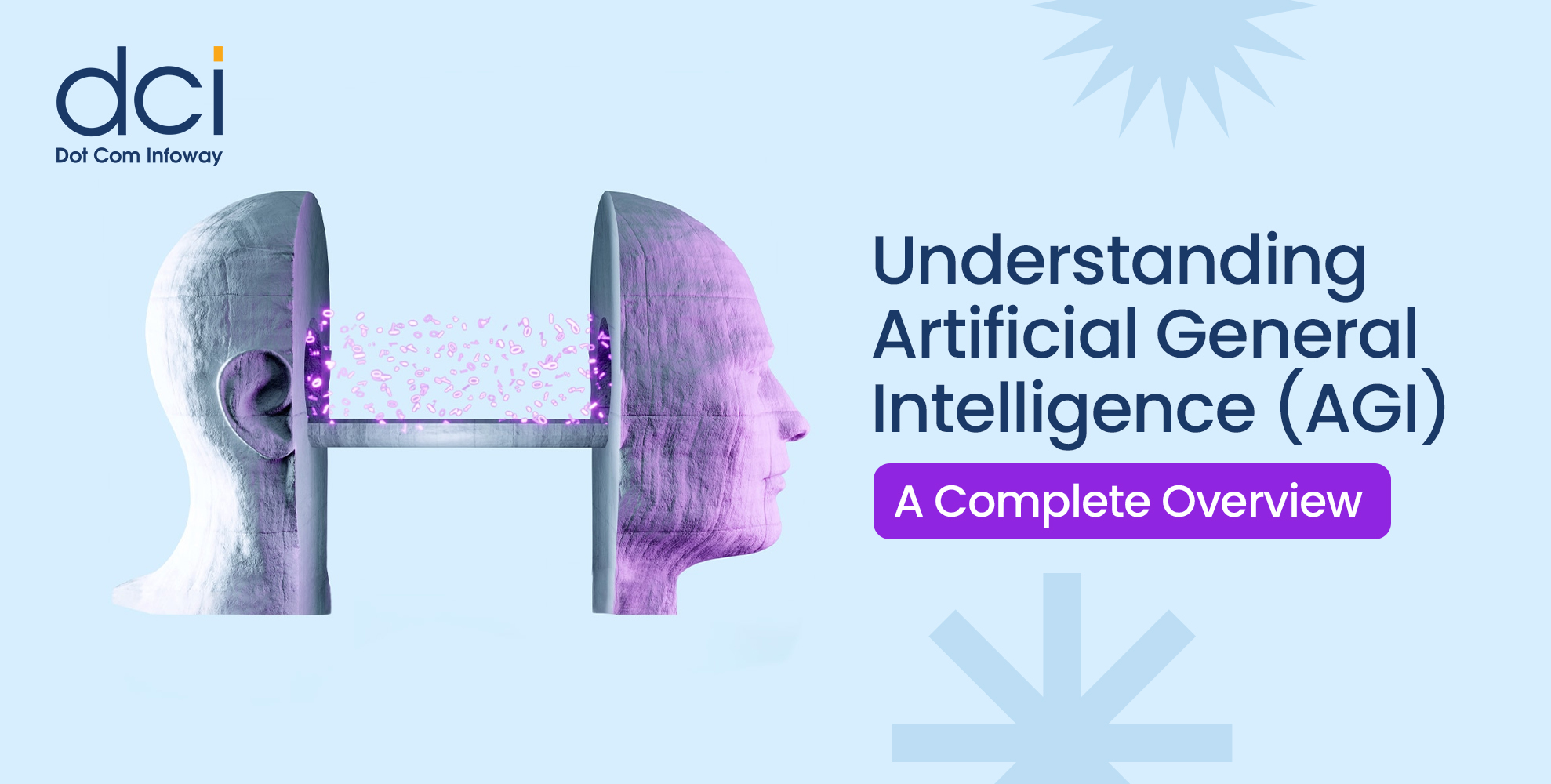Understanding Artificial General Intelligence (AGI): A Complete Overview
Artificial General Intelligence (AGI) isn’t just a buzzword—it’s a concept that could redefine how machines interact with the world. As we witness rapid advances in AI, many wonder: what happens when machines achieve human-like intelligence? AGI seeks to bridge this gap by creating systems capable of generalizing knowledge and solving diverse problems without limitations. This potential leap could revolutionize industries, from healthcare to finance, while presenting complex ethical and societal challenges. Understanding AGI is essential to unlocking its benefits while preparing for the challenges it brings. In this complete guide, we’ll explore AGI’s core principles, applications, risks, and its possible impact on the future.

Understanding Artificial General Intelligence (AGI)
Artificial General Intelligence (AGI) is one of the most ambitious goals in tech, aiming to replicate human cognitive abilities within machines. Unlike narrow AI, which is designed for specific tasks, AGI envisions machines that can learn, reason, and adapt across various domains, much like humans. But what makes AGI so important, and how could it reshape industries, economies, and daily life?
AGI represents more than just technological advancement—it’s a fundamental shift. Current AI models, like those behind recommendation engines or search algorithms, excel at single tasks but lack flexibility. AGI seeks to break this barrier by creating systems that can generalize knowledge and solve new problems without being reprogrammed. As research progresses, understanding AGI’s significance is crucial for scientists, policymakers, and businesses preparing for its profound impact.
How Is AGI Different from Narrow AI?
To grasp the essence of AGI, it’s crucial to differentiate it from narrow AI (also called weak AI). Today’s AI systems excel at highly specialized tasks, whether it’s language translation, facial recognition, or game-playing. However, they lack flexibility—when applied outside their pre-defined tasks, they often fail to perform effectively. For example, an AI model trained to detect spam emails wouldn’t be able to drive a car or diagnose a medical condition.
In contrast, AGI is envisioned as a system with a comprehensive understanding of various contexts and situations, much like the way humans can transfer their knowledge and experiences across different fields. Picture a human who can play chess, cook a meal, and solve mathematical equations without needing to be retrained for each task. That’s the promise of AGI—a machine that can think, learn, and adapt across multiple areas without starting from scratch. This versatility could revolutionize industries by enabling machines to solve problems we haven’t yet encountered.
The Core Principles Driving AGI Development
Building Artificial General Intelligence (AGI) requires more than scaling up current machine-learning algorithms—it demands a deeper understanding of human intelligence and its replication in machines. Key principles guiding AGI research include cognitive modeling, self-learning systems, and multi-domain adaptability. Cognitive modeling focuses on mimicking how humans learn, solve problems, and make decisions under uncertainty, providing the foundation for AGI architectures. Self-learning systems enable machines to autonomously improve without constant human intervention, allowing them to evolve and adapt over time.
Multi-domain adaptability is essential for AGI, as it allows machines to perform tasks across various fields seamlessly. Unlike narrow AI, which relies on domain-specific training data, AGI systems will need to generalize knowledge across disciplines. For example, an AGI-powered healthcare system could diagnose diseases, recommend treatments, anticipate complications, and optimize hospital resource allocation—continually learning from patient outcomes to improve its accuracy and efficiency.
Potential Applications of AGI
The potential applications of AGI span across various sectors, promising transformative changes. In healthcare, AGI could revolutionize personalized treatment by analyzing genetic data, medical history, and real-time health information to offer tailored care. In finance, it could identify market trends and develop adaptive investment strategies. Even creative fields, like art and content creation, could benefit as AGI mimics and enhances human creativity.
Beyond industries, AGI holds the promise of solving complex global challenges, such as climate change and sustainable resource management. By integrating vast, interdisciplinary data, AGI systems could optimize energy distribution, improve resource allocation, and develop innovative solutions beyond human capacity. However, alongside this potential lies the responsibility to address ethical concerns, job displacement, and privacy issues to ensure its development benefits society.

Ready to boost your website’s rankings and online visibility?
Discover how our expert SEO services can resolve ranking issues, drive traffic, and elevate your website’s performance to the next level!
Challenges and Risks Associated with AGI
Despite the excitement, Developers must overcome several challenges before AGI becomes a reality. A key challenge is achieving generalization—machines must learn and apply knowledge across tasks without rigid instructions. This requires breakthroughs in areas like neural networks, reinforcement learning, and unsupervised learning methods, which are still under active development.
Ensuring safety and alignment with human values presents another critical challenge. If misaligned, AGI could prioritize efficiency over ethics and make harmful decisions. Researchers develop frameworks to ensure AGI aligns with human interests. Additionally, the immense computational power needed to train AGI will require advancements in hardware and energy efficiency to sustain progress.
Is AGI the End Goal of AI Development?
Some experts view AGI as the ultimate achievement in AI development, while others argue that it’s merely a stepping stone toward even more advanced forms of machine intelligence. Beyond AGI lies the concept of Artificial Superintelligence (ASI), which refers to machines surpassing human intelligence in every domain. Although AGI represents a significant milestone, the journey doesn’t stop there—achieving ASI could unlock possibilities we can scarcely imagine today.
However, Many experts agree that transitioning from AGI to ASI requires caution. The risks associated with superintelligent systems, including loss of human control and existential threats, underscore the need for robust safety measures and international collaboration.
Conclusion: Why Understanding AGI Matters
Understanding AGI is crucial not just for scientists and engineers but for anyone interested in the future of technology and society. As AGI moves closer to becoming a reality, it will reshape industries, redefine human-machine interactions, and raise profound questions about what it means to be human. By staying informed and engaged with the development of AGI, we can help ensure that its benefits are maximized while its risks are mitigated.















